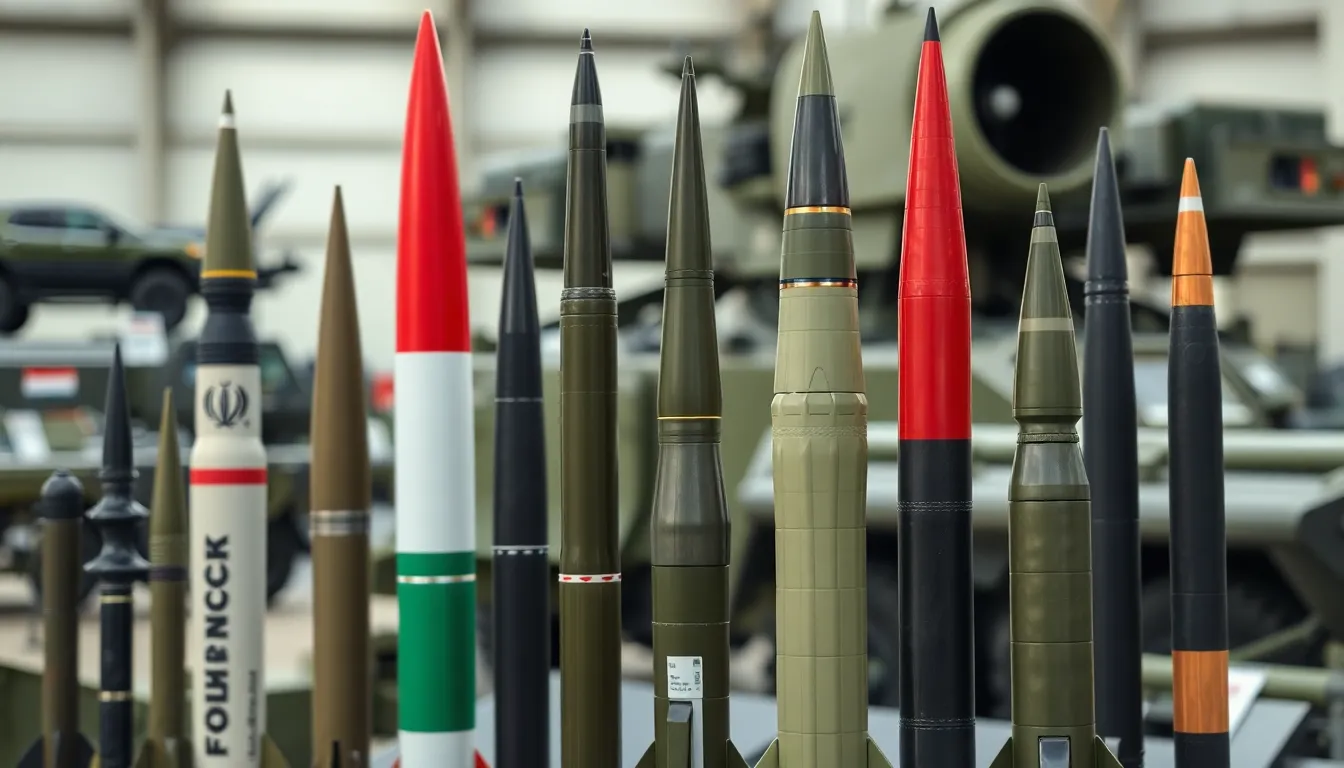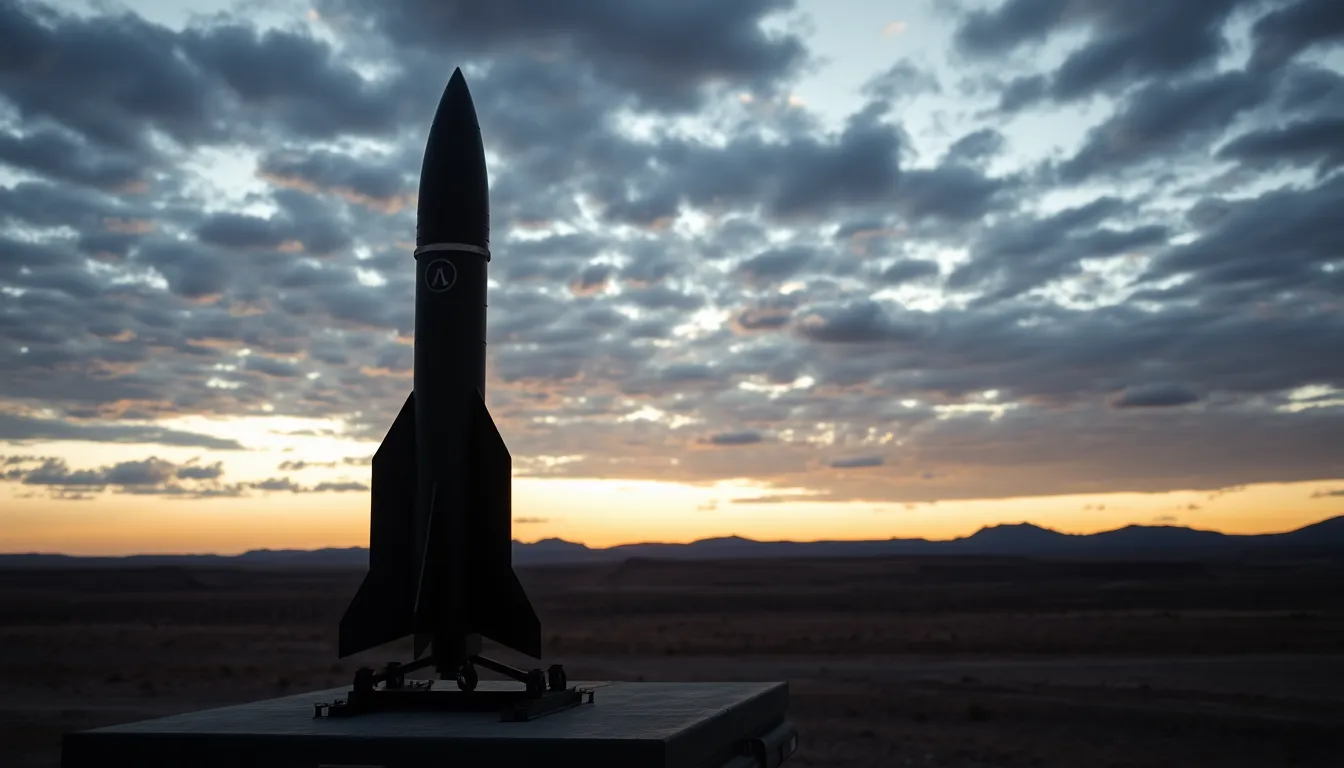When it comes to missile technology, Iran’s capabilities often spark curiosity and concern in equal measure. Picture a game of darts, but instead of a pub, it’s a global stage, and the stakes are a bit higher than just bragging rights. Understanding the reach of Iran’s missiles isn’t just for defense analysts; it’s crucial for anyone interested in the geopolitical chess game unfolding in the Middle East.
Table of Contents
ToggleOverview of Iran’s Missile Capabilities
Iran possesses a diverse array of missile systems characterized by varying ranges and strategic purposes. Their arsenal includes short-range ballistic missiles (SRBMs), medium-range ballistic missiles (MRBMs), and cruise missiles. SRBMs like the Fateh-110 can hit targets within 200 kilometers effectively. Meanwhile, the Shahab-3, classified as an MRBM, extends its reach to approximately 2,000 kilometers, covering much of the Middle East and parts of Europe.
Numerous reports indicate Iran’s focus on improving missile technology. Advancements typically involve upgrading precision targeting, increasing payload capacities, and enhancing the ability to evade missile defense systems. The emphasis on precision in missile guidance systems elevates the threat level in potential conflict scenarios.
Cruise missiles, including the Soumar and the Quds, further expand Iran’s strike capabilities. These missiles have ranges exceeding 1,500 kilometers and can evade radar detection, making them harder to intercept. They offer Iran strategic flexibility, targeting critical military facilities or infrastructure across the region.
In addition to these missiles, it is essential to recognize Iran’s ongoing development initiatives. Collaborative efforts with other nations, particularly in missile technology, pave the way for advancements. Continuous testing and modifications contribute to a more formidable and sophisticated missile program.
Reports from defense analysts highlight the urgency for neighboring countries and global powers to monitor Iran’s missile development closely. Missile capabilities influence not only regional security dynamics but also international relations. Iran’s missile reach shapes defensive postures among its adversaries, necessitating strategic responses. Understanding these capabilities remains crucial for assessing potential threats.
Types of Missiles Used by Iran

Iran’s missile arsenal comprises various types of systems tailored to meet specific strategic goals. The country’s missile development emphasizes enhancing reach, precision, and evasion capabilities.
Short-Range Ballistic Missiles
Iran’s short-range ballistic missiles (SRBMs) primarily target regional adversaries. Examples include the Fateh-110, designed for strikes within 200 kilometers. Its accuracy makes it suited for tactical ground engagements. Additionally, the Zolfaghar, another SRBM, boasts a range of 700 kilometers and advanced guidance systems, improving effectiveness. SRBMs play a crucial role in Iran’s immediate defense posture against nearby threats.
Medium-Range Ballistic Missiles
Medium-range ballistic missiles (MRBMs) enable Iran to project power beyond its borders. The Shahab-3, with a range of approximately 2,000 kilometers, can strike critical infrastructure across the Middle East and into parts of Europe. Various upgrades enhance its reliability and accuracy. Another notable MRBM is the Emad, focusing on precision targeting and reducing collateral damage. Such capabilities reinforce Iran’s strategic deterrence framework.
Long-Range Ballistic Missiles
Iran’s long-range ballistic missiles (LRBMs) extend its reach significantly. The Shahab-5 and the Khorramshahr can target areas over 2,000 kilometers away, presenting a threat to distant adversaries. Developing these systems demonstrates Iran’s intent to enhance its regional influence. High-tech features include improved guidance systems and payload capacities. LRBMs contribute to Iran’s ability to deter adversaries and assert itself in regional power dynamics.
Key Factors Influencing Missile Range
Multiple factors determine the effective range of Iran’s missile systems. Considerations include technology advancements and geographic factors.
Technology and Engineering Advancements
Significant improvements in missile technology enhance range capabilities. Developments in propulsion systems allow for more sustained flights. Precision targeting technology reduces errors and increases effectiveness over distances. Advanced materials contribute to lighter and more durable missile structures. Ongoing research aims to overcome limitations previously faced in range and reliability. Iran’s collaboration with other nations in missile engineering accelerates these advancements.
Geographic Considerations
Geography plays a critical role in missile range effectiveness. Proximity to critical regions shapes strategic targeting options. Iran’s location influences the potential flight paths of its missiles. Terrain can affect trajectory and interception during launch. Proximity to land and maritime borders increases the operational presence of Iran’s missiles. Neighboring countries pose unique challenges and opportunities for missile deployment. Through geographic analysis, missile range assessments become more precise and relevant.
Current Range Estimates
Iran’s missile systems display a range of capabilities that significantly influence regional stability and global security. Understanding these ranges offers insights into potential threats and conflicts.
Regional Targets
Iran’s short-range ballistic missiles effectively cover significant areas within the region. For instance, the Fateh-110 and Zolfaghar target locations within 200 kilometers, allowing swift tactical responses. The medium-range Shahab-3 extends this capability with a reach of approximately 2,000 kilometers, affecting much of the Middle East. Furthermore, Iran’s missile deployment provides it with strategic advantages over neighbors, enhancing deterrence and defense measures against potential threats. By leveraging these short and medium-range systems, Iran actively demonstrates its commitment to maintaining regional influence and power projection.
Global Reach
Long-range ballistic missiles significantly broaden Iran’s influence beyond regional borders. The Shahab-5 and Khorramshahr showcase ranges extending well over 2,500 kilometers, posing threats to distant adversaries in Europe and Asia. Such capabilities showcase Iran’s ambition to assert itself on a global stage, making it crucial for opposing powers to monitor developments closely. Ongoing advancements in missile technology enhance accuracy and range, thereby increasing the potential risks associated with Iran’s military capabilities. Analyzing these long-range systems emphasizes the importance of understanding Iran’s intent and the implications for international security dynamics.
Implications of Iran’s Missile Range
Iran’s missile range significantly impacts regional security and international relations. The varied capabilities of Iran’s missile systems allow for tactical advantages and political leverage. Short-range ballistic missiles enable immediate responses to threats, while medium-range and long-range systems facilitate power projection beyond its borders.
Strategic deterrence plays a critical role in Iran’s military posture. Deterrence measures establish a balance of power, influencing adversaries’ decision-making processes. As examples, Iran’s Shahab-3 can reach approximately 2,000 kilometers, covering substantial portions of the Middle East and parts of Europe, thereby raising concerns among NATO allies.
Ongoing advancements in missile technology heighten these implications. Improved propulsion systems and precision targeting abilities extend the effective range of Iran’s arsenal. Additionally, geographic factors influence operational capabilities, positioning Iran advantageously near critical regions.
Another consideration is collaboration with other nations on missile technology development. Such partnerships enhance Iran’s defense capabilities, allowing for a more sophisticated missile program. Regional actors and global powers must remain vigilant regarding these developments.
Iran’s missile capabilities directly affect security dynamics in the Middle East. Nations within striking distance of these systems may alter their military strategies in response. Monitoring Iran’s advancements and potential threats poses challenges for international stability.
Overall, assessing Iran’s missile range and capabilities serves as a vital component for understanding the broader implications for global security and geopolitical relations.
Iran’s missile capabilities represent a significant factor in shaping the security landscape of the Middle East and beyond. As the country continues to advance its missile technology and expand its range, the implications for regional stability and international relations become increasingly complex.
Understanding the nuances of Iran’s missile systems is crucial for defense analysts and policymakers alike. The ongoing developments highlight the need for vigilance among neighboring countries and global powers to address potential threats effectively.
As Iran’s influence grows through its missile capabilities, the geopolitical dynamics will likely continue to evolve, necessitating a proactive approach to ensure stability and security in the region.




